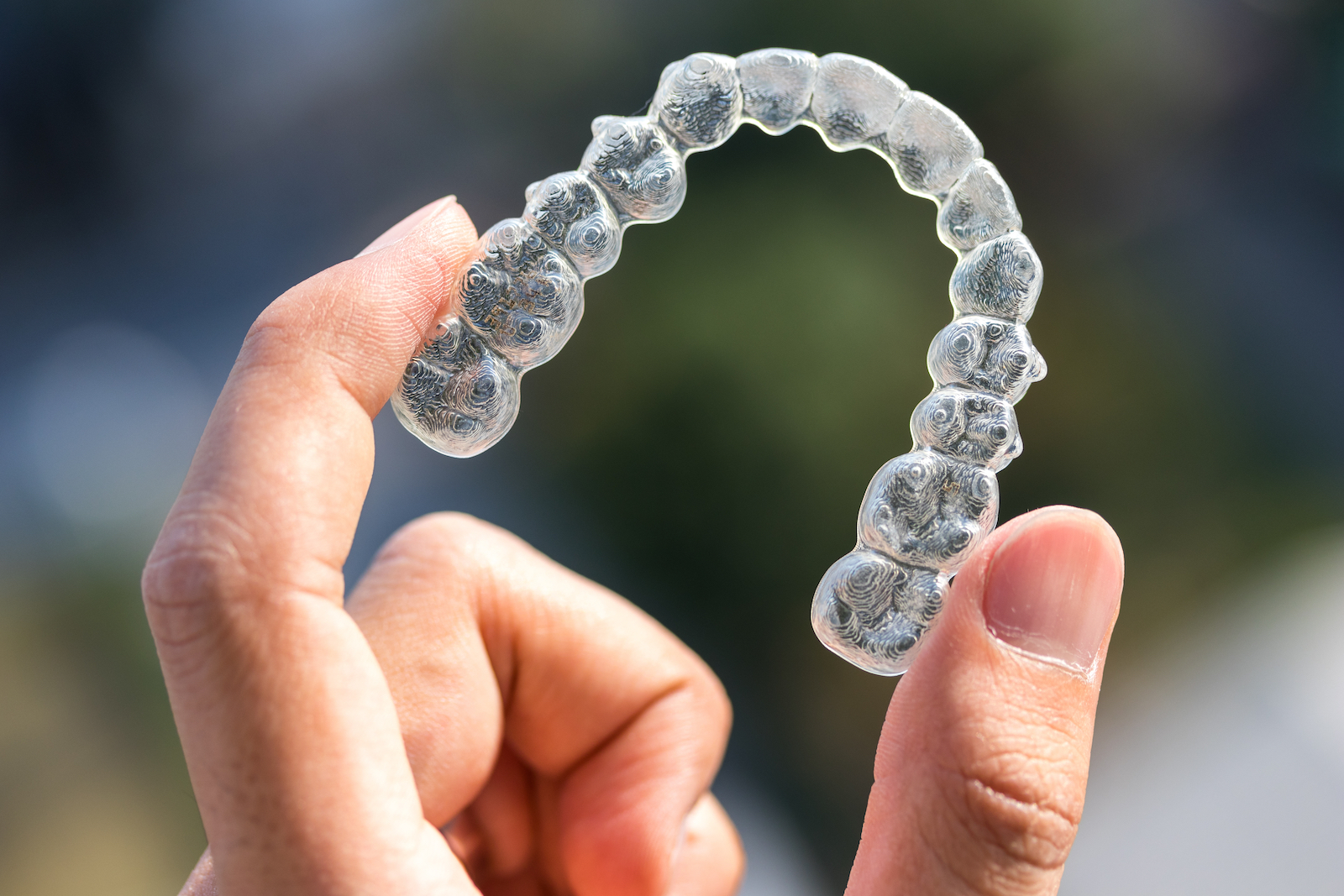Invisalign
When Should You Consider Braces?
The decision to get braces can be a complex and lengthy process. Before coming to a decision, there are a lot of factors to take into consideration. Is there an age limit to getting braces? What types of braces are there, and what are the differences? I’ve had braces already; can I get them again? Will there be a lot of pain? These are valid questions and can become overwhelming in the face of a decision. If you want braces for yourself or your child, here are the most important things you should know before taking the plunge.
Why Should I Get Braces?
We often think of this as a cosmetic procedure more than anything, and while that is a welcomed desire, there are several other reasons one might want to change their smile. Fixing crooked teeth can be highly beneficial in addition to being cosmetic. Crooked, crowded, and misaligned teeth can lead to jaw problems, tooth decay, speech problems, and more.
Crowding
Crowded teeth may be difficult to brush correctly, and some may be difficult to floss entirely; poor dental hygiene can lead to cavities, tooth decay, and gum disease. Others may find that their crowding and alignment cause an inability to pronounce certain sounds correctly and have improper tongue placement, leading to discomfort and speech problems.
Alignment
It is uncomfortable for teeth that have never descended to grow over the top of other teeth. Gaps can make us feel insecure. You may have jaw clicking or popping problems or frequently find yourself accidentally biting your cheeks and tongue due to misaligned and protruding teeth. Or, maybe your crowns and fillings are constantly being worn down by an improper bite. Addressing the root of these concerns with a set of braces can help prevent potentially lengthy, painful procedures in the future.
If you relate to any of these problems, you may be thinking it’s time to dive right in but does getting braces mean you have to have a traditional mouth full of wires and bands? The simple answer is no! While that may be your preference or end up being what your orthodontist recommends for you, it isn’t your only option.
Modern Technology
With modern-day dentistry comes a relatively wide selection of “braces.” The term ‘braces’ has evolved from what we imagine as wires and anchors to things like transparent aligners that can transform your smile almost invisibly. There are many options, each with benefits. It can be challenging to know why you should choose one over another?
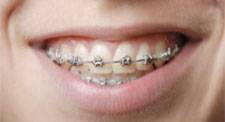
Metal
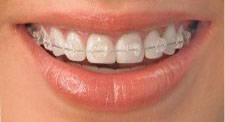
Ceramic
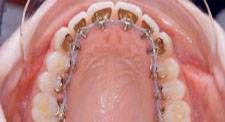
Lingual
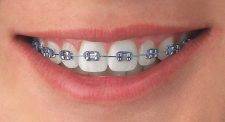
Self-Ligating
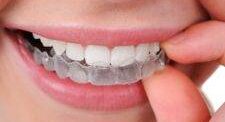
Invisible
Types of Braces
There are five main types to choose from:
- metal
- ceramic
- lingual
- self-ligating
- invisible.
Each of these serves a similar purpose and has pros and cons in comfort, technique, appearance, and length of wear.
Metal
These are the most commonly seen and a classic for a reason. This style, while most visible, is efficient and easily accessible. They are the cheapest option and require no extra thought at home compared to something like removable trays, making them ideal for children and adolescents. This style also appeals to some for the fun and colorful bands that connect each wire, making them relatively customizable. However, while virtually hands-free, metal braces require a thorough oral hygiene routine; otherwise, cavities and tooth decay can become prevalent.
Ceramic
Similar to the traditional metal type, ceramic braces work almost the same way, with the main difference being the use of ceramic to bind the wires. This ceramic matches the color of your teeth, making them less noticeable than colorful; however, they are prone to staining. The minimal aesthetic of this style makes it the more popular choice among adults.
Self-ligating
The next type is self-ligating. While this may sound like it does all the work alone, that isn’t quite the case. These braces work similarly to traditional metal braces and look very similar. The difference between the two is the method of attachment. Self-ligating braces use door-like clip brackets instead of bands to hold the wires.
This style is quicker to apply and adjust than metal braces. It is less uncomfortable and painful than the traditional kind. Due to the faster nature of these braces, those who can’t sit long during appointments usually prefer these. The bracket-style makes these easier to clean and doesn’t require as rigorous of a routine to maintain. The downside to self-ligating braces is the price point; since the technology is more advanced, the price goes up.
Lingual
Our last type of brace that uses wires is the lingual type. This style is a type that sits behind the teeth instead of in front. These braces are the only type that is truly invisible and highly efficient. Lingual braces offer the minimalism of invisible trays with the power of full metal braces for complex orthodontic needs.
Adults who want braces but don’t want to draw attention to their dental work prefer this style.
The downsides to lingual braces are minimal but still present. Since the metal braces are attached to the back of your teeth, this can lead to a difference in tongue placement and speech habits, commonly producing a lisp. Additionally, they can irritate the tongue or cause discomfort. Those with more pronounced overbites may have a tough time with these, as brackets can more easily pop off. Lastly, this style is often the most expensive since it is a specialty and not taught in the standard orthodontic curriculum.
Invisible
This style, popularized and often referred to as Invisalign, is as it sounds. Invisible trays work to align your teeth in an incredibly minimal and more comfortable way than traditional braces. Your dentist will take a mold of your existing teeth that will be input into a 3D system that can then be custom altered to your desired aesthetic result. Next, clear plastic trays, produced in a step-by-step sequence, will slowly change your teeth’s position every couple of weeks until straight teeth result.
Anchors
These trays are invisible. Your orthodontist will attach small, tooth-colored anchor points onto specific teeth to provide more pressure in certain spots and keep the trays from slipping off.
This style is speedy and requires fewer appointments, but it has limits. These cannot accomplish complex orthodontic work, but they are a good choice for aesthetic changes, touch-ups after braces, or simple orthodontic work.
If you are a candidate for invisible aligners, you will have the benefit of being able to remove the trays to brush and floss your teeth, unlike metal braces thoroughly. This style usually comes in as the second most expensive after lingual braces.
Am I A Candidate?
With so many types of braces available today, it is likely that no matter your orthodontic needs you will be able to find a style that fits you. Ideal candidates for braces are often older children and teens as a result of their still-growing bones.
For children, most parents will start inquiring between the ages of 9-14, with the ideal age being 12-13. Softer bones make braces more comfortable and the teeth easier to move, but that doesn’t mean that adults can’t benefit from them as well. While your bones as an adult are solid, our teeth tend to shift for our entire lives and therefore make braces a perfectly viable option no matter how old you are, even if it takes a little more time.
While it seems like braces can be a good fit for anyone, you may want to consider some of the downsides and conditions that may not make you a candidate.
Those with gum disease and tooth decay are not usually eligible to get braces. A healthy mouth is required to ensure safe and successful braces, so your dentist and orthodontist may work with you first to correct those problems before going ahead with braces. Additionally with braces comes things like pain and discomfort, decalcification of teeth, canker sores and irritation, challenging oral hygiene, risk of infection, speech changes, difficulty eating, and more.
The dedication of time and money shouldn’t be without consideration of all variables. Talking with your dentist and orthodontist will be extremely beneficial to you in making this decision and fleshing out all the details.
If you’re curious about braces and feel as though you could benefit from any of these styles, don’t hesitate to schedule an appointment. Feel safe in knowing a decision isn’t required right away and the journey is up to you. Achieving your perfect smile is something everyone deserves and braces may just be that stepping stone.

